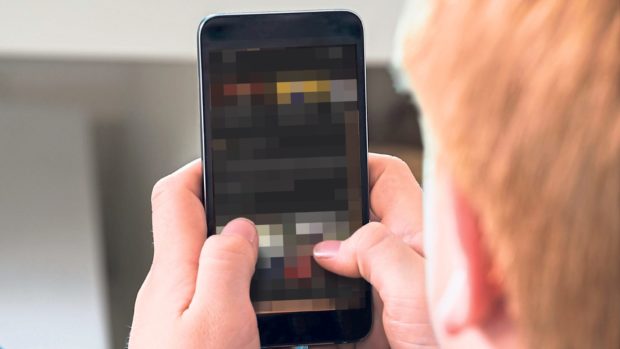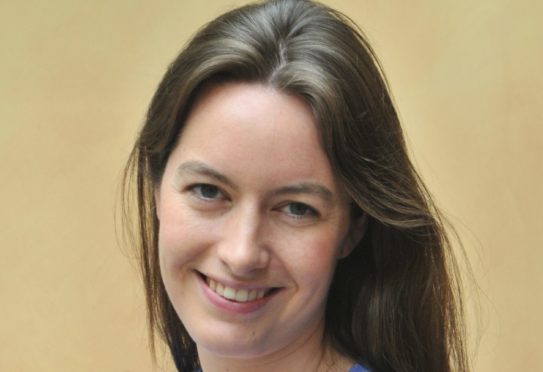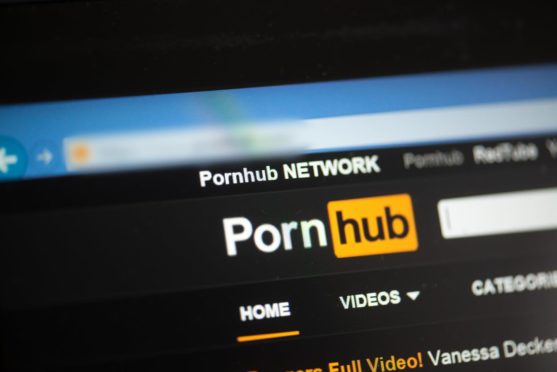Child welfare charities are up in arms over the decision to scrap safeguards designed to prevent children from accessing online pornography.
A motion by Highlands and Islands MSP Rhoda Grant expressed “concern” over the UK Government’s failure to implement Part 3 of the Digital Economy Act 2017, which aims to protect children from accessing harmful online materials.
The motion, which calls for the implementation of Part 3, has cross-party support at Holyrood.
Part 3 was designed to compel commercial pornography websites to verify the age of their visitors, thereby preventing children from accessing them.
It also sought to establish a regulator empowered to take robust action against any site showing illegal ‘extreme pornography’, which normalises violence against women.
Part 3 was supported by children’s charities, women’s groups, campaigners and parliamentarians on all sides.
However, it was never brought into force and Westminster now intends to repeal it.
UK ministers claim that new online safety measures supersede Part 3.
‘Dangerous loophole’ in legislation
Social policy charity Care said that these new measures risked leaving a “dangerous loophole” in legislation as they will not apply to all commercial pornography sites, instead focusing on those hosting ‘user generated content’.
Michael Veitch, Scottish parliamentary officer for Care, said: “We are highly concerned about the potential impact, here in Scotland, of the failure to implement Part 3 of the Digital Economy Act.
“For each day these safeguards fail to be implemented, children in Scotland continue to stumble across commercial porn sites which are full of graphic and disturbing content.
“We are delighted that a number of MSPs, from different parties, have backed this motion and we urge the UK government to change course.”
Aberdeen woman Annabel Turner, who founded CyberSafe Scotland in 2018, said scrapping Part 3 left a “huge hole” in the law.
The former barrister is also the co-chair of the Online Safety, Child Sexual Exploitation and Child Trafficking Sub Committee of the Aberdeen Child Protection Committee.
“Most children and young people – around 60% – are seeing porn and adult material online through social media sites, which wifi filters and on-device controls are ineffective to stop,” she said.
“Early access to adult material is profoundly damaging for children.
“This has to be regulated expressly – the delay to legislate is unacceptable and we are seeing the harm to children and young people in real time.”
The UK government’s Online Safety Bill, published last month at Westminster, had led to hope that the internet will become a safer place for young people.
The Bill is being scrutinised by a joint committee of MPs, with a final version due to be formally introduced to parliament for debate later this year.
Under the terms of the Bill, social media companies will be prevented from allowing under-13s onto their platforms, through AI-driven age verification measures.
‘Protections will be strongest in the world’
The UK government said it believes the Online Safety Bill will enable it to go further than the Digital Economy Act’s focus on commercial pornography sites.
A spokesman for the Department for Digital, Culture, Media and Sport said: “We will be able to protect children from a broader range of harmful content and activity, across a wider range of sites.
“Our Online Safety Bill will deliver the strongest protections in the world for children online – shielding them from harm on the most visited pornography sites and pornography posted on social media.
“Websites and apps which do not put measures in place to stop children accessing pornography and other harmful content could face huge fines or having their sites blocked.”
Meanwhile, new figures show a total of 1,966 online child sex abuse crimes were logged by Police Scotland during 2020/21, a rise of 6% on the previous year and nearly 25% up on the five-year average.
Child welfare charities including NSPCC Scotland said the figures were evidence of the growing risk to children.
Ms Turner added: “The most recent figures from the Internet Watch Foundation are that a staggering 500,000 adults in the UK now have an interest in sexual material involving children online.
“It is very hard for anyone who doesn’t have an interest in that material to fully comprehend the scale of that abuse.
“So much of it is currently going unreported because children are worried about reporting it, because the methods of manipulation used make children feel ashamed and stupid, or involve the child being paid.”


